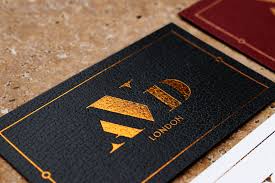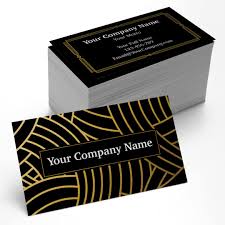Table of Contents
In the competitive world of business, first impressions are everything. One of the most effective tools for establishing your professional identity and leaving a memorable mark is a custom business card. Unlike generic cards, custom business cards allow you to showcase your brand’s personality, creativity, and professionalism in a compact format. However, with countless options available, choosing the perfect custom business card design can be overwhelming.
In this comprehensive guide, we will explore how to choose a custom business card that not only reflects your brand but also stands out in a sea of competitors. We will focus on three critical points that can elevate your design, making it more outstanding and memorable. Whether you’re a startup owner, a seasoned entrepreneur, or a freelancer, these insights will help you craft a business card that truly represents your brand and leaves a lasting impression.
1. Understand Your Brand Identity and Audience
Before diving into design specifics, it’s essential to understand your brand identity and target audience. Your custom business card should be a visual extension of your brand — conveying your values, style, and professionalism.
Define Your Brand Personality
Is your brand modern and innovative or classic and trustworthy? The tone of your brand should influence your card’s design elements:
- Modern and Trendy: Use minimalistic designs, bold fonts, and vibrant colors.
- Classic and Elegant: Opt for subdued tones, serif fonts, and high-quality materials.
- Creative and Artistic: Incorporate unique shapes, illustrations, or textured finishes.
Know Your Audience
Who are your potential clients or partners? The design should appeal directly to them:
- Corporate Clients: Prefer professional, clean, and sophisticated designs.
- Creative Industries: Appreciate bold, unconventional, and artistic styles.
- Local Community or Niche Markets: Consider incorporating local motifs or niche-specific visuals.
By aligning your custom business cards with your brand identity and audience preferences, you create a foundation for an outstanding design that resonates and builds trust.

2. Focus on Design Elements That Make Your Business Card Stand Out
Once you have a clear understanding of your brand and audience, the next step is to focus on key design elements that elevate your custom business cards.
A. Unique Shape and Size
Standard rectangular cards are common, but unconventional shapes can make your card memorable:
- Rounded corners for a softer look.
- Square or circular cards for a modern feel.
- Custom die-cut shapes that align with your brand (e.g., a camera shape for a photographer).
Tip: Ensure the shape remains practical for storage and handling.
B. High-Quality Materials and Finishes
Material choice significantly impacts the tactile experience:
- Premium cardstock: Thick, durable, and luxurious.
- Textured finishes: Linen, embossed, or matte textures add sophistication.
- Specialty coatings: Spot UV, foil stamping, or metallic inks create eye-catching effects.
Pro Tip: Use textured or embossed elements sparingly to highlight key information or your logo.
C. Color Scheme and Typography
Color evokes emotion and brand recognition. Choose a palette that aligns with your branding:
- Bold, contrasting colors for a vibrant, energetic vibe.
- Muted, monochrome tones for elegance and simplicity.
- Consistency: Use your brand colors to reinforce recognition.
Typography choices should reflect your brand personality:
- Serif fonts for tradition and stability.
- Sans-serif fonts for modernity and clarity.
- Custom fonts can add uniqueness but ensure readability.
D. Incorporate Visuals and Logo Strategically
Your logo is the centerpiece of your custom business cards. Ensure it’s prominent and clear. Additional visuals, like patterns or icons, should complement the overall design without cluttering.
Tip: Keep the design balanced; avoid overcrowding information or visuals.

3. Prioritize Functionality and Practicality
A business card should not only be visually appealing but also functional and easy to use.
A. Readability of Contact Information
Ensure all essential details are easy to read:
- Name
- Position
- Company name
- Phone number
- Email address
- Website
- Social media handles
Use a font size and style that maintain clarity. Avoid overcrowding; leave sufficient whitespace.
B. Incorporate Interactive Elements
In the digital age, integrating QR codes or NFC chips can add interactivity:
- QR codes linking to your website, portfolio, or LinkedIn profile.
- NFC tags for instant contact sharing.
Ensure these elements are seamlessly integrated into your custom business cards without compromising the design.
C. Double-Check Compatibility and Print Quality
Before finalizing your order:
- Confirm that colors match your branding and look good in print.
- Choose a reputable printing service with high-quality output.
- Request samples if possible to evaluate material and finish.

Final Tips for Creating Outstanding Custom Business Cards
- Keep it simple: Avoid clutter; prioritize key information.
- Be consistent: Match your card design with your overall branding.
- Use high-resolution images: To prevent pixelation.
- Stay updated: Follow design trends but adapt them to your brand.
- Seek professional help: Consider hiring a graphic designer if necessary.
Why Custom Business Cards Are Worth the Investment
Investing in high-quality, custom business cards can significantly impact your professional relationships. They demonstrate attention to detail, reinforce your brand, and can be a conversation starter. With the right design, your custom business cards can open doors to new opportunities and partnerships.
Conclusion
Choosing a custom business card that stands out involves a blend of understanding your brand, leveraging effective design elements, and ensuring functionality. By focusing on these three key points — aligning with your brand identity, emphasizing distinctive design features, and prioritizing practicality — you can create custom business cards that leave a memorable impression.
Remember, your business card is often the first tangible connection clients or partners have with your brand. Make it count. Start designing a custom business card today that truly reflects your professionalism and uniqueness.
Keywords:
- Custom business cards
- Business card design
- Unique business cards
- Creative business cards
- Business card materials
- Business card printing
- Branding and business cards
- Professional business cards
If you need assistance with designing or printing your custom business cards, consider working with reputable printing services that specialize in high-quality custom business cards. Your perfect card is just a few steps away!
